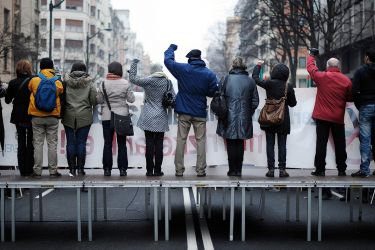The tragic deaths of George Floyd in Minneapolis, Ahmaud Arbery in Georgia and Breonna Taylor in Kentucky have shown the world how deeply embedded racial injustice and racism are in the social fabric of the United States.
These recent acts of violence have raised a set of complex and challenging questions about inequality in our society: Why are Black Americans repeatedly targeted by the police? What can be done to stop further atrocities against minority communities from occurring? As some protests against these deaths turn violent, are political protests and demonstrations an effective way to instigate change? How can we build a more just society?
These important questions are among the subjects of Stanford scholars’ work. Some researchers have worked with police agencies to develop recommendations for how officers can build safer and stronger relationships with the communities they serve. Others have examined what makes some political protests effective and why others turn violent. Researchers have also looked at how racial injustice cuts across other parts of society – such as schools and workplaces – and what can be done to reduce disparities. Here is some of that research and more.








































